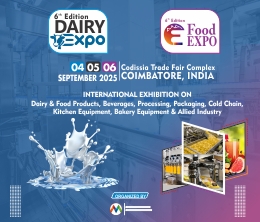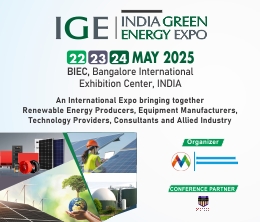Ecuador Insulation Market (2025-2031) | Companies, Trends, Growth, Value, Forecast, Analysis, Share, Revenue, Segmentation, Industry, Outlook & Size
| Product Code: ETC5832857 | Publication Date: Nov 2023 | Updated Date: Apr 2025 | Product Type: Market Research Report | |
| Publisher: 6Wresearch | Author: Summon Dutta | No. of Pages: 60 | No. of Figures: 30 | No. of Tables: 5 |
Ecuador Insulation Market Size Growth Rate
The Ecuador Insulation Market is projected to witness mixed growth rate patterns during 2025 to 2029. The growth rate begins at 7.57% in 2025, climbs to a high of 9.86% in 2027, and moderates to 3.14% by 2029.

Insulation Market in Ecuador
The Insulation market in Ecuador is projected to grow at a growing growth rate of 9.86% by 2027, within the Latin America region led by Brazil, along with other countries like Mexico, Argentina, Colombia and Chile, collectively shaping a dynamic and evolving market environment driven by innovation and increasing adoption of emerging technologies.

Ecuador Insulation Market Overview
The insulation market in Ecuador is growing steadily due to an increasing focus on energy efficiency and temperature regulation across industrial and residential buildings. The demand for materials like fiberglass, foam, and reflective insulation is expanding as construction projects prioritize sustainability and cost savings. Local manufacturers are responding by developing high-quality insulation materials that reduce energy consumption and enhance comfort. The trend toward environmentally friendly and fire-resistant materials is also influencing market dynamics, as consumers seek reliable and durable insulation solutions.
Drivers of the market
The insulation market in Ecuador is influenced by the growing awareness of energy conservation and sustainability in building projects. The rising construction activities and the demand for energy-efficient buildings drive the need for high-quality insulation materials. Additionally, the trend towards retrofitting and upgrading existing buildings to improve energy efficiency supports market dynamics. The growing focus on regulatory compliance and safety standards further enhances the demand for insulation products.
Challenges of the market
The insulation market faces challenges related to material sourcing and competition from alternative insulation products. Fluctuations in the availability and pricing of insulation materials can impact production costs, making it crucial for manufacturers to establish reliable supply chains. Additionally, competition from emerging insulation technologies, such as eco-friendly and sustainable materials, necessitates ongoing innovation to meet evolving consumer demands. Regulatory compliance regarding safety and environmental standards further complicates market dynamics, requiring manufacturers to adapt practices and ensure product certifications. The need for effective communication strategies to promote insulation benefits is essential for market growth.
Government Policy of the market
The Ecuadorian government is focusing on the insulation market to enhance energy efficiency in buildings and industrial applications. Policies are being implemented to promote the use of high-quality insulation materials that comply with safety standards. The government encourages research initiatives aimed at developing innovative insulation solutions. Public awareness campaigns will inform stakeholders about the importance of insulation for reducing energy consumption and enhancing comfort.
Key Highlights of the Report:
- Ecuador Insulation Market Outlook
- Market Size of Ecuador Insulation Market, 2024
- Forecast of Ecuador Insulation Market, 2031
- Historical Data and Forecast of Ecuador Insulation Revenues & Volume for the Period 2021-2031
- Ecuador Insulation Market Trend Evolution
- Ecuador Insulation Market Drivers and Challenges
- Ecuador Insulation Price Trends
- Ecuador Insulation Porter`s Five Forces
- Ecuador Insulation Industry Life Cycle
- Historical Data and Forecast of Ecuador Insulation Market Revenues & Volume By Product Type for the Period 2021-2031
- Historical Data and Forecast of Ecuador Insulation Market Revenues & Volume By Glass Wool for the Period 2021-2031
- Historical Data and Forecast of Ecuador Insulation Market Revenues & Volume By Mineral Wool for the Period 2021-2031
- Historical Data and Forecast of Ecuador Insulation Market Revenues & Volume By EPS for the Period 2021-2031
- Historical Data and Forecast of Ecuador Insulation Market Revenues & Volume By XPS for the Period 2021-2031
- Historical Data and Forecast of Ecuador Insulation Market Revenues & Volume By CMS Fibers for the Period 2021-2031
- Historical Data and Forecast of Ecuador Insulation Market Revenues & Volume By Calcium Silicate for the Period 2021-2031
- Historical Data and Forecast of Ecuador Insulation Market Revenues & Volume By Aerogel for the Period 2021-2031
- Historical Data and Forecast of Ecuador Glass Wool Insulation Market Revenues & Volume By Others for the Period 2021-2031
- Historical Data and Forecast of Ecuador Insulation Market Revenues & Volume By Application for the Period 2021-2031
- Historical Data and Forecast of Ecuador Insulation Market Revenues & Volume By Infrastructure for the Period 2021-2031
- Historical Data and Forecast of Ecuador Insulation Market Revenues & Volume By Industrial for the Period 2021-2031
- Historical Data and Forecast of Ecuador Insulation Market Revenues & Volume By HVAC & OEM for the Period 2021-2031
- Historical Data and Forecast of Ecuador Insulation Market Revenues & Volume By Transportation for the Period 2021-2031
- Historical Data and Forecast of Ecuador Insulation Market Revenues & Volume By Appliances for the Period 2021-2031
- Historical Data and Forecast of Ecuador Insulation Market Revenues & Volume By Furniture for the Period 2021-2031
- Historical Data and Forecast of Ecuador Insulation Market Revenues & Volume By Packaging for the Period 2021-2031
- Ecuador Insulation Import Export Trade Statistics
- Market Opportunity Assessment By Product Type
- Market Opportunity Assessment By Application
- Ecuador Insulation Top Companies Market Share
- Ecuador Insulation Competitive Benchmarking By Technical and Operational Parameters
- Ecuador Insulation Company Profiles
- Ecuador Insulation Key Strategic Recommendations
Frequently Asked Questions About the Market Study (FAQs):
1 Executive Summary |
2 Introduction |
2.1 Key Highlights of the Report |
2.2 Report Description |
2.3 Market Scope & Segmentation |
2.4 Research Methodology |
2.5 Assumptions |
3 Ecuador Insulation Market Overview |
3.1 Ecuador Country Macro Economic Indicators |
3.2 Ecuador Insulation Market Revenues & Volume, 2021 & 2031F |
3.3 Ecuador Insulation Market - Industry Life Cycle |
3.4 Ecuador Insulation Market - Porter's Five Forces |
3.5 Ecuador Insulation Market Revenues & Volume Share, By Product Type, 2021 & 2031F |
3.6 Ecuador Insulation Market Revenues & Volume Share, By Application, 2021 & 2031F |
4 Ecuador Insulation Market Dynamics |
4.1 Impact Analysis |
4.2 Market Drivers |
4.3 Market Restraints |
5 Ecuador Insulation Market Trends |
6 Ecuador Insulation Market Segmentations |
6.1 Ecuador Insulation Market, By Product Type |
6.1.1 Overview and Analysis |
6.1.2 Ecuador Insulation Market Revenues & Volume, By Glass Wool, 2021-2031F |
6.1.3 Ecuador Insulation Market Revenues & Volume, By Mineral Wool, 2021-2031F |
6.1.4 Ecuador Insulation Market Revenues & Volume, By EPS, 2021-2031F |
6.1.5 Ecuador Insulation Market Revenues & Volume, By XPS, 2021-2031F |
6.1.6 Ecuador Insulation Market Revenues & Volume, By CMS Fibers, 2021-2031F |
6.1.7 Ecuador Insulation Market Revenues & Volume, By Calcium Silicate, 2021-2031F |
6.1.9 Ecuador Insulation Market Revenues & Volume, By Others, 2021-2031F |
6.1.10 Ecuador Insulation Market Revenues & Volume, By Others, 2021-2031F |
6.2 Ecuador Insulation Market, By Application |
6.2.1 Overview and Analysis |
6.2.2 Ecuador Insulation Market Revenues & Volume, By Infrastructure, 2021-2031F |
6.2.3 Ecuador Insulation Market Revenues & Volume, By Industrial, 2021-2031F |
6.2.4 Ecuador Insulation Market Revenues & Volume, By HVAC & OEM, 2021-2031F |
6.2.5 Ecuador Insulation Market Revenues & Volume, By Transportation, 2021-2031F |
6.2.6 Ecuador Insulation Market Revenues & Volume, By Appliances, 2021-2031F |
6.2.7 Ecuador Insulation Market Revenues & Volume, By Furniture, 2021-2031F |
7 Ecuador Insulation Market Import-Export Trade Statistics |
7.1 Ecuador Insulation Market Export to Major Countries |
7.2 Ecuador Insulation Market Imports from Major Countries |
8 Ecuador Insulation Market Key Performance Indicators |
9 Ecuador Insulation Market - Opportunity Assessment |
9.1 Ecuador Insulation Market Opportunity Assessment, By Product Type, 2021 & 2031F |
9.2 Ecuador Insulation Market Opportunity Assessment, By Application, 2021 & 2031F |
10 Ecuador Insulation Market - Competitive Landscape |
10.1 Ecuador Insulation Market Revenue Share, By Companies, 2024 |
10.2 Ecuador Insulation Market Competitive Benchmarking, By Operating and Technical Parameters |
11 Company Profiles |
12 Recommendations | 13 Disclaimer |
- Single User License$ 1,995
- Department License$ 2,400
- Site License$ 3,120
- Global License$ 3,795
Search
Related Reports
- Africa Low Temperature Powder Coating Market (2025-2031)
- North America Low Temperature Coating Market (2025-2031)
- North America Low Temperature Co-Fired Ceramic Market (2025-2031)
- North America Low Sugar Fruit Snacks Market (2025-2031)
- North America Low Sodium Snack Market (2025-2031)
- North America Low Smoke Halogen Free Flame-Retardant Polypropylene Market (2025-2031)
- North America Low-Salt Cheese Market (2025-2031)
- North America Low-Power WAN Market (2025-2031)
- North America Low Power Generator Sets Market (2025-2031)
- North America Low Molecular Weight Heparin Market (2025-2031)
Industry Events and Analyst Meet
Our Clients
Whitepaper
- Middle East & Africa Commercial Security Market Click here to view more.
- Middle East & Africa Fire Safety Systems & Equipment Market Click here to view more.
- GCC Drone Market Click here to view more.
- Middle East Lighting Fixture Market Click here to view more.
- GCC Physical & Perimeter Security Market Click here to view more.
6WResearch In News
- Doha a strategic location for EV manufacturing hub: IPA Qatar
- Demand for luxury TVs surging in the GCC, says Samsung
- Empowering Growth: The Thriving Journey of Bangladesh’s Cable Industry
- Demand for luxury TVs surging in the GCC, says Samsung
- Video call with a traditional healer? Once unthinkable, it’s now common in South Africa
- Intelligent Buildings To Smooth GCC’s Path To Net Zero













